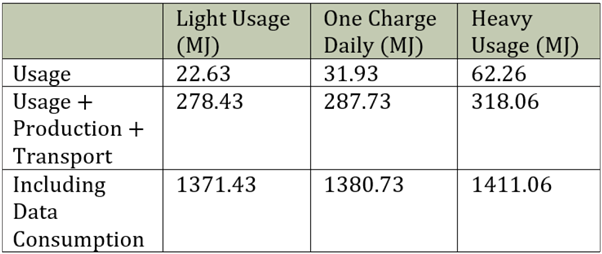Production Energy Consumption
The production phase of the iPhone 4S involves a significant amount of embodied energy. The logic board, battery, and casing are the primary contributors to this energy, with values of 200 MJ, 22 MJ, and 4 MJ respectively. These values are derived from data sources including Granta Edupack and other industry-specific databases.
In addition to the materials, the transport of the iPhone 4S also contributes to its embodied energy. Given the global distribution of Apple’s suppliers and factories, the transport energy was estimated to be 26 MJ considering the energy consumed during the transportation of raw materials and finished products, highlighting the environmental impact of global supply chains. Moreover, the iPhone 4S was assembled by Taiwan-based contract manufacturers Pegatron and Hon Hai Precision Industry, also known under the Western moniker Foxconn and would have used novel advanced manufacturing techniques that would likely not have been optimized for energy efficiency in their infancy.
Energy during Phone Usage
The energy consumption of the iPhone 4S during its use phase is highly dependent on the usage patterns, charging habits, and data usage of the user. Three scenarios are considered: light use, heavy use, and one charge a day. It was calculated that where light usage would contribute 22MJ to the phones overall embodied energy, heavy usage would contribute almost triple this at 62MJ. The iPhone 4S battery has a capacity of 1432mAh. The energy consumption can vary significantly depending on not only screen time, but how the phone is used. For example, streaming video can consume a lot of energy, while simply sending text messages will use much less.



